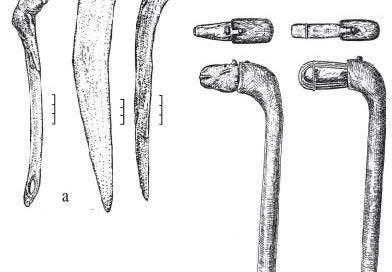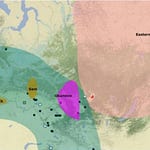The process of horse domestication was a slow and gradual one, taking place over thousands of years. The first step was herding, which involved corralling wild horses and keeping them in captivity for short periods of time. This allowed humans to study their behavior and begin to understand their needs and habits, and develop knowledge and experience in their herding.
The earliest domestication of horses is believed to have occurred around 6,000 years ago on the Pontic Steppes, a vast grassland that stretches from present-day Ukraine to Kazakhstan. Here, the Samara, Botai and Khvalynsk hunter-gatherers herded the first domesticated horses, named DOM1 (domesticated horse 1), using them as a food source rather than for transportation. Surprisingly, it turns out that these horses were actually not the forerunners of modern horses, but instead were ancestors of today’s Przewalski’s horses, which are endangered “wild” horses found only in Mongolia that escaped domestication long ago. They were also aggressive, difficult to catch and impossible to tame, and it wasn't until the advent of a more complete domestication that humans were able to truly harness their potential.
Research shows that the horse became better represented in faunal assemblages after the arrival of livestock, reaching peak percentages in 4000-3000 BC, while the representation of other game species in the region decreased. Starting from about 4500-4400 BC, horse-head shaped mace heads of the Sredni Stog and Khvalynsk cultures were placed in graves, while horses – but no other wild game animals – were included with cattle and sheep in funerary feasts and sacrifices throughout the Pontic-Caspian steppe. This elevated symbolic status, referred to as the "horse cult", may simply reflect the high dietary importance of horses, which survive winter better than cattle and sheep as they are better able to feed on grass under snow. However, this "horse cult" is thought to be associated with the early stages of horse domestication. The "horse cult" had arrived in the lower Danube Valley by about 4400 BC. Therefore, domestication would have begun if horses were bred in captivity.
Eneolithic horse scepter from the Khvalynsk culture suggests early horse domestication around 4500 BC.
DOM 2
Around 3000 BC, a new kind of horse was domesticated by herders of the western Eurasian steppe. This early cousin of modern horses, named DOM2 (Domesticated Horse 2), arose from the center of horse domestication near the lower Volga and Don rivers in the northern Caucasus area. This new breed of horse was different from the previously domesticated DOM1 horse. There are gene variants present in all DOM2 horses, but not in DOM1, which made them less aggressive and to have stronger back, traits that would have made it possible for humans to train and ride them, for the first time. Once the DOM2 horses emerged, they quickly spread throughout Eurasia. The initial dispersal of DOM2 horses was facilitated by horseback riding and began by about 2300 BC, and chariotry began to spread together with DOM2 horses after 2000 BC.
Genetic studies have confirmed that the DOM 2 horses are the MRCA (Most Recent Common Ancestor) of all domesticated modern horses. In other words, all domesticated horses we see today originate from the same source population of DOM2 horses from the Pontic Steppes. This new type of horse was the ancestor of all modern horses, from tiniest to tallest, from heaviest to lightest and from fastest to slowest.
The origin and spread of DOM2 horses between 3rd-1st millenium BC














Share this post